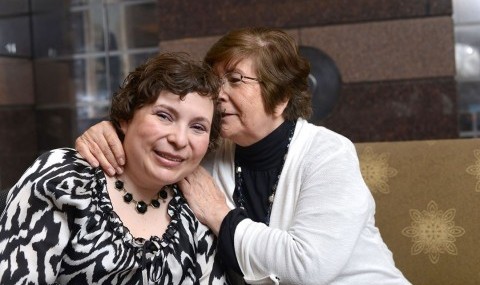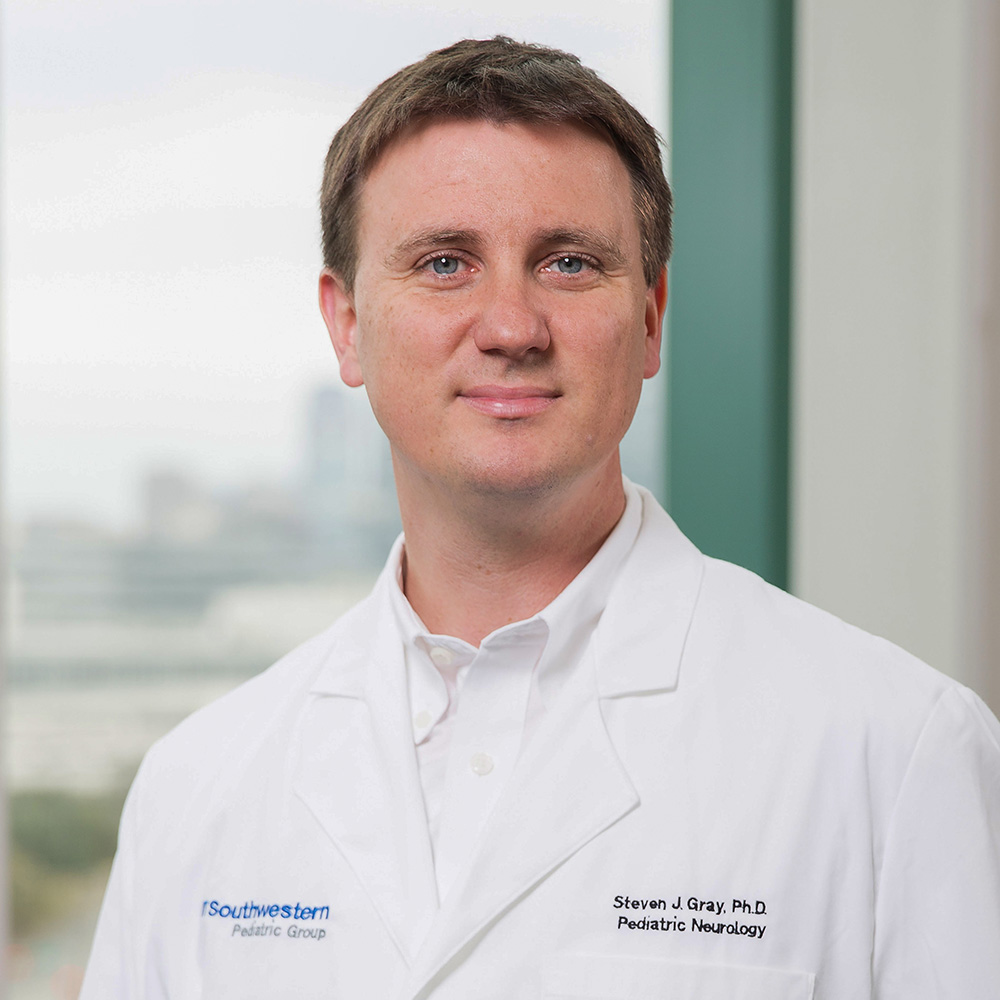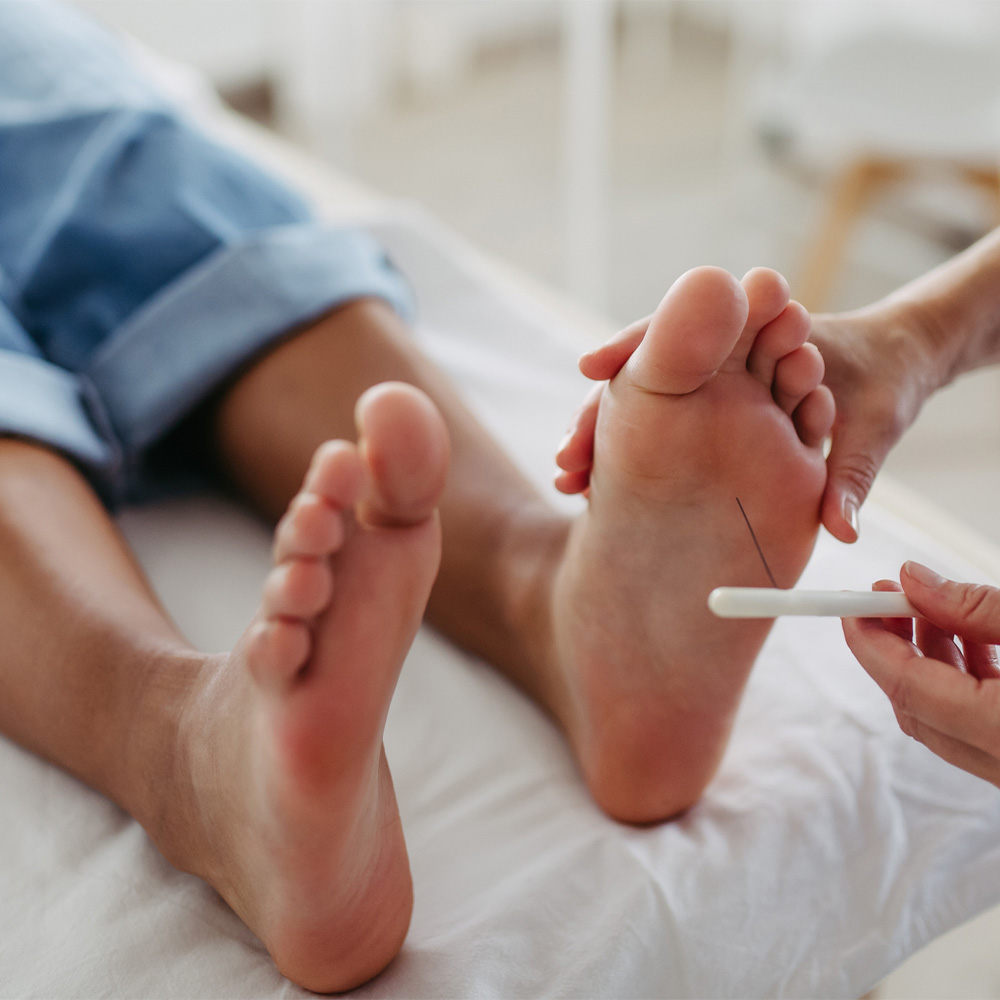Stroke survivor credits life, health to comprehensive UTSW team

The migraine was brutal. But as the manager on duty at a local cosmetics department, Paige Montgomery couldn’t really leave work. Eventually, the pain became so excruciating that a co-worker had to take her home, on what should’ve been a 15-minute drive.
But Ms. Montgomery was so disoriented that she had no idea where she lived. The minutes stretched into a maddening two-hour journey.
When she finally got home, her mother, Eve Byrd, knew there was something wrong. Ms. Byrd recalls that her daughter kept saying that she wanted to tune in to the Macy’s Thanksgiving Day Parade. But it was the day before Thanksgiving 2014.
Ms. Montgomery started vomiting profusely, but she resisted her mother’s suggestion to be taken to the ER.
“No, it’s just a migraine,” she insisted. “I’ve just got to get to bed.” Finally, later that night, under protest, she was taken to the ER at Texas Health Presbyterian Hospital in Plano.
A CT scan revealed that Ms. Montgomery, then 43, had suffered an intraventricular hemorrhage. The next day, a very unstable Ms. Montgomery was transferred to Zale Lipshy University Hospital. At the time, UT Southwestern was just a few months shy of being designated as an Advanced Comprehensive Stroke Center, but it wasn’t happenstance that she was brought to Zale, said Dr. Babu Welch, Associate Professor of Neurosurgery & Radiology, who also holds the Duke Samson Chair of Neurological Surgery.
“She was brought here because Zale was built to take care of this type of disease,” Dr. Welch said. “The bypass operation, the neurological ICU care — all the things that make a Comprehensive Center were already here.”
A rare disease
An angiogram revealed that Ms. Montgomery had come in with a brain bleed, known as a hemorrhagic stroke.
But there was more: it also showed the presence of moyamoya — a rare, progressive cerebrovascular disorder that causes arteries to close at the base of the brain. Moyamoya means “puff of smoke” in Japanese, because the phrase describes how newly formed blood vessels appear on an angiogram — a tangle of tiny vessels formed to compensate for the blockage.
Ms. Montgomery would need an arterial bypass — an STA-MCA, or superficial temporal artery to middle cerebral artery — to get more blood flow to the area. But they needed time for her to recover from the bleed, and therapy with UTSW’s Physical Medicine and Rehabilitation team. Dr. Welch performed the bypass in February.
“I believe God had put Dr. Welch in the right place at the right time,” says Ms. Montgomery, who in April came back to Zale to visit with Dr. Welch and Beth Allen, RN, Faculty Associate, Neurological Surgery. “Because he found the moyamoya, it has really been a life-saving thing for me, because it is pretty advanced,” Ms. Montgomery says. “It’s at a stage where I have a lot of symptoms and residual effects.”
Dr. Welch says that Ms. Montgomery is one of the few patients with the disease who has presented with hemorrhage here at UT Southwestern. “Moyamoya is more commonly a non-bleeding presentation in our North American patients,” he says.
“So, lucky me,” Ms. Montgomery says with a wry grin, then, gesturing to Dr. Welch, adds: “Well, yes, lucky me, because at least I got synced up with you, because you saved my life.”
In praise of UTSW teamwork
Sitting in her wheelchair at a conference table, Ms. Montgomery beams out a cheerful smile that feels ever-present, especially when she’s bragging about “Team Montgomery.”
And though there are almost too many players to count, she frequently sings their praises — even in line at the supermarket — and occasionally attempts to list them all, from Dr. Welch, Ms. Allen and a team of nurses, to Drs. Steven Vernino (Neurology), Jarett Berry (Cardiology), Mohita Anil Patel (Family Medicine), Michael VanPelt (Orthopaedic Surgery), Gary Lemack (Urology) and Heather Adair and Benjamin Nguyen (both Physical Medicine and Rehabilitation). Ms. Montgomery has even started going to UTSW’s Journey Stroke Support Group, led by Rochelle Brozgold, a social worker in department of Neurological Surgery. “Really, the whole entire team here — they’re just fantastic,” Ms. Montgomery says.
“We say all the time it’s important to not emphasize the doc,” Dr. Welch says. “Yes, the doctor knows what he’s doing, and I’m used to doing bypasses, but I can’t do anything else if I don’t have the team that works with me.”
A huge part of that team, Ms. Montgomery adds, is Ms. Allen, who will retire in July after a 40-year career in nursing. “Beth Allen, I cannot say enough about you,” Ms. Montgomery says. “We saw so much of your efficiency, and working with the residents. You’re an amazing lady. You just get in there. You can tell she’s so well-respected. She gets the job done.”
Ms. Allen smiles, but immediately shifts credit to the group of nurses working on the ICU and on the fifth floor. “They know the disease processes in and out,” she says. “For a patient like Paige, the ICU nurses have to be able to be trained to keep the patient’s blood pressure high enough, but not so high that there’s another bleed. And they were constantly on the floor checking Paige’s blood pressure. It’s a very fine balance.”
Dr. Welch says that with Ms. Montgomery’s ongoing treatment, it’s crucial to prevent further strokes, which can “just keep whittling you away,” he says. Paige Montgomery, and her mother, Eve Byrd Mother and daughter are navigating a drastically new life, one with continued physical and medical challenges for Paige, along with the psychological struggles that accompany the knowledge that she won’t ever go back to the kind of career she had before.
“But we feel quite lucky,” Ms. Byrd says. “But she’s great compared to where she was when it first started. We’re thankful that she is where she is with her cognitive ability.”
Ms. Allen says both women have come a long way. “When I knew Paige and Eve in the beginning, there was a lot of fear about Paige’s situation. But to me, they now seem like they have learned so much about the disease, and Paige has recovered so well, and she seems so much more adjusted. They’re coping so much better. Knowledge is power. It’s rewarding to see that kind of progress.”
Mother and daughter realize that progress has been thanks to a team effort. “They say it takes a village, and it does,” Ms. Byrd says. “Our village is the wonderful team at UT Southwestern.” May is American Stroke Month. For videos and more information on stroke awareness, visit utswmedicine.org/stroke.




